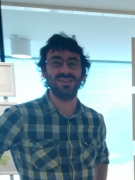– Europe/Lisbon
Online

Igor Kravchenko, CEMAT-IST
Investment problem with switching modes
In this talk we will look at the optimal control problem of a firm that may operate in two different modes, one being more risky than the other, in the sense that in case the demand decreases, the return of the risky mode is lower than with the more conservative mode. On the other side, in case the demand increases, the opposite holds. The switches between these two alternative modes have associated costs. In both modes, there is the option to exit the market.
We will focus on two different parameter scenarios, that describe particular (and somehow extreme) economic situations. In the first scenario, we assume that the market is expected to increase in such a way that once the firm is producing in the more risky mode, it is never optimal to switch to the more conservative one. In the second scenario, there is a hysteresis region, where the firm is waiting in the more risky mode, in production, until some drop or increase in the demand leads to an exit or changing to the more conservative mode. This hysteresis region cannot be attained under continuous production.
We then address the problem of the optimal time to invest under each situation. Depending on the relation between the switching costs (equal or different from one mode to another), it may happen that the firm invests in the hysteresis region.
Joint work with Cláudia Nunes and Carlos Oliveira.